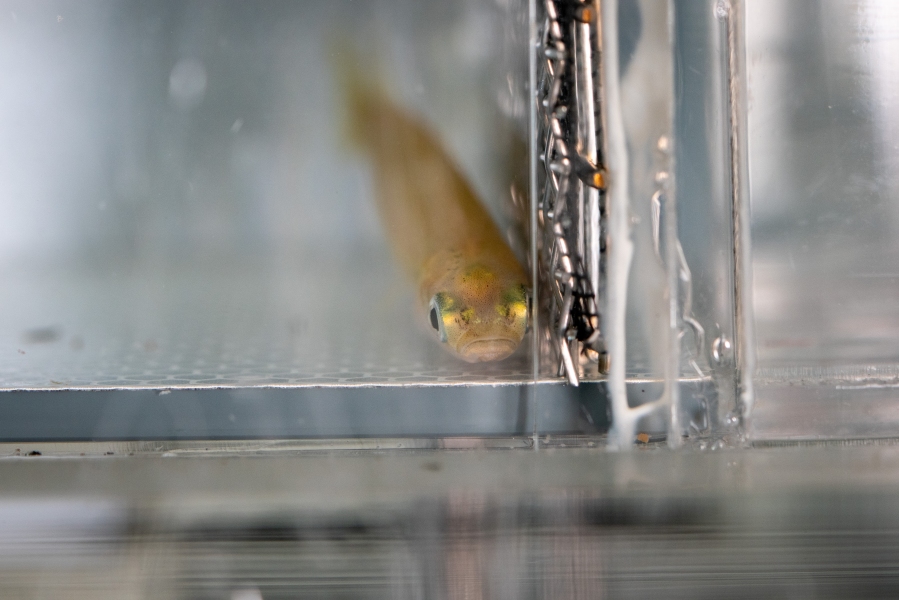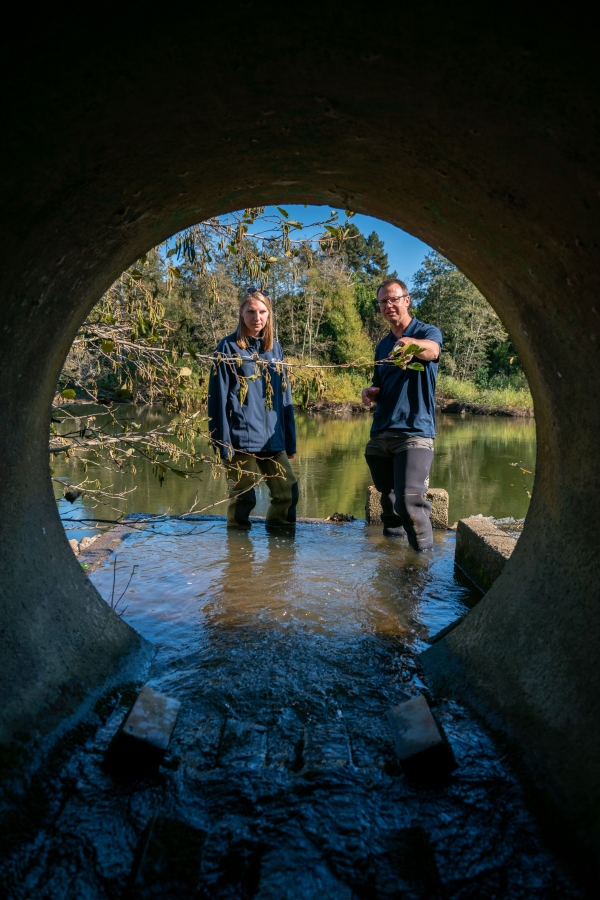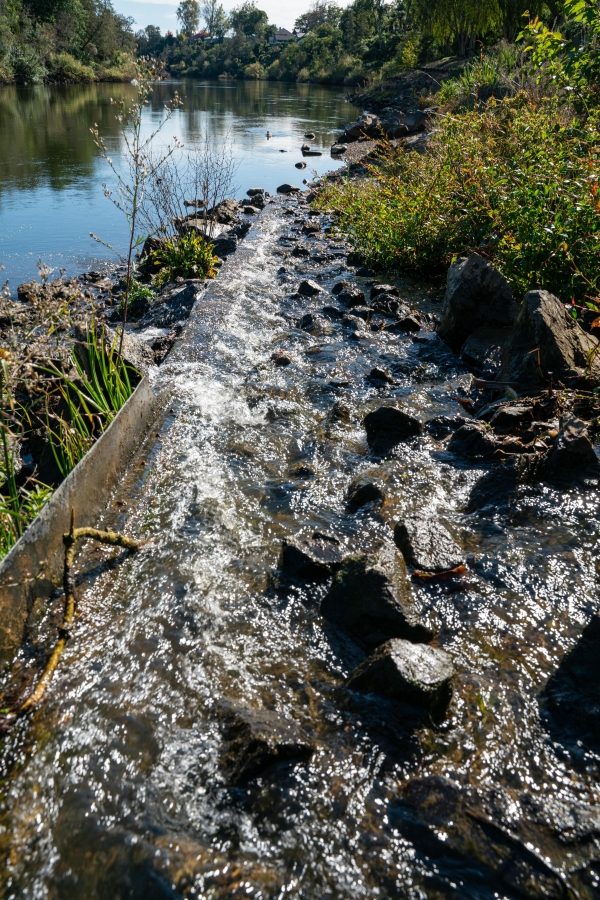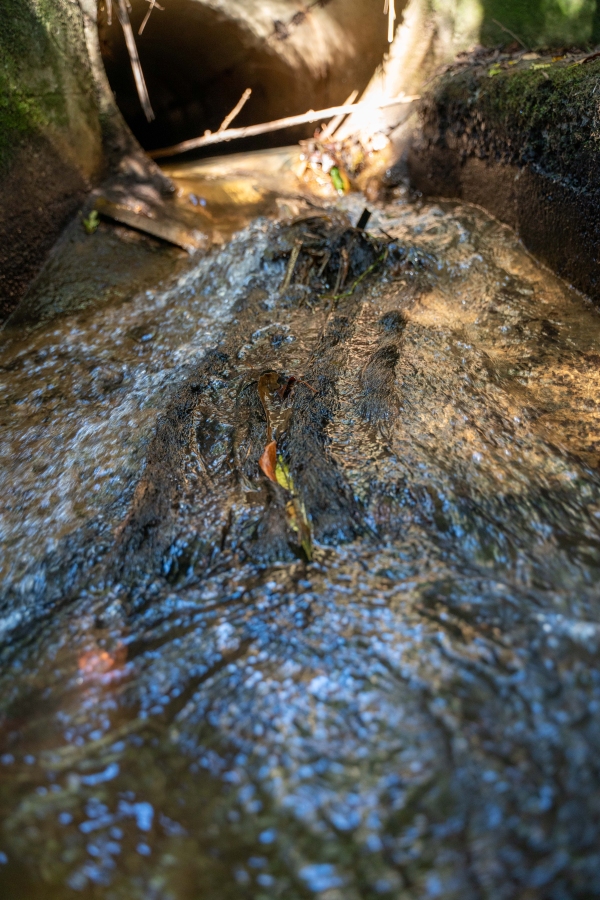New Zealand has just over 50 native freshwater fish species. Of these, 85 % are endemic and 75 % are deemed to be at risk of decline or are threatened.
Many fish species migrate significant distances upstream and downstream to complete their lifecycle, but on their journey, they encounter poorly designed culverts, dams and other structures that prevent them from completing their migrations.
NIWA’s Freshwater Species Programme Leader Dr Paul Franklin said World Fish Migration Day, on May 21, is a good time to remind New Zealanders of the challenges migratory fish face, and also the research that is underway to provide solutions.
“We haven’t been looking after our freshwater fish very well and one of the consequences is a reduction in the distribution and abundance of some of the country’s most valued species."
“Some of the well-known migratory species are eels or tuna, torrentfish, lamprey (piharau/kanakana), several bully species, and whitebait of which there are five species: īnanga, kōaro, banded kōkopu, shortjaw kōkopu and giant kōkopu.”
Franklin, a freshwater ecologist at NIWA’s Hamilton office, said migratory fish deserved more attention.
“A high percentage are endemic, meaning they only exist in New Zealand, so we have an obligation to improve our efforts to look after them.”
Part of the effort is a $7.2 million, five-year Endeavour Fund research programme that NIWA is leading to develop tools and guidance to reduce bottlenecks to freshwater fish migration.
The programme supported the creation of the New Zealand Fish Passage Guidelines to help water managers, environmental officers, iwi, infrastructure owners and local communities design instream structures to provide better fish passage.
The guidelines document was developed with the Department of Conservation in partnership with the New Zealand Fish Passage Advisory Group.
It was released in 2018 and was used in the development of new fish passage regulations in the National Policy Statement for Freshwater Management 2020 and the National Environmental Standards for Freshwater.
Those policies now require that any new structures on rivers are designed in a way that minimises impacts on fish migration.
“But we have many existing structures where it’s impossible for fish to pass, and over the coming years we need to look at how we can remove those barriers,” Franklin said.
Eels migrate to upstream habitats where they can live for several decades before returning to the sea to spawn.
“Many instream structures would not have been present when those eels first made their way upstream, so returning to the sea is going to be difficult.
“Our research shows that there are about 120,000 structures on our river network and fish can encounter 10 or more barriers on their migrations.”
NIWA is working with the Ministry for the Environment and Department of Conservation to update the Fish Passage Guidelines in 2022, informed by the outcomes of the Endeavour Fund research.
An example includes research on the swimming capability of freshwater migratory fish, led by University of Waikato student Rachel Crawford.
Crawford is on a four-year scholarship with NIWA, conducting a series of experiments at its Hamilton lab as part of her PhD in ecology and biodiversity.
The tests aim to calculate the top swimming speeds that freshwater fish can sustain indefinitely and the impacts of water temperature has swimming ability.
The results will determine the water velocities needed to let fish swim through culverts, dams and weirs to reach upstream habitats. This data will help engineers and water managers design better structures and fish passage systems.
Fish migration barriers are found in both rural and urban environments making it a national issue, Franklin said.
One of the ways that people can help is by using the fish passage tool that NIWA developed. It is available on the NIWA Citizen Science mobile app.
“People can use it to record instream structures and the data will give us an idea of the scale of the problem and help us focus our efforts to help migratory fishes.”
1 / 4

Elvers, or juvenile eels, released into the Waikato River after helping out with the experiments at the NIWA lab in Hamilton. [Photo: Stuart Mackay, NIWA]
2 / 4

University of Waikato student Rachel Crawford has been running experiments testing the swimming capability of freshwater fish. [Photo: Stuart Mackay, NIWA]
3 / 4
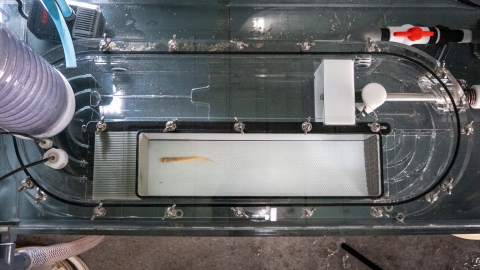
A swim tunnel at the NIWA Hamilton lab. [Photo: Stuart Mackay, NIWA]
4 / 4
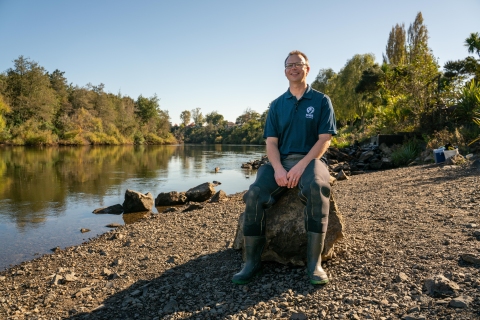
NIWA Freshwater Ecologist Paul Franklin said a high percentage of our freshwater fish are endemic and deserve more attention to ensure their survival. [Photo: Stuart Mackay, NIWA]
Related information:
- Fish Passage Assessment Tool
- Freshwater species ecology and management
- New Zealand fish passage guidelines
- Understanding fish passage in New Zealand
- World Fish Migration Day – Connecting fish, rivers and people

